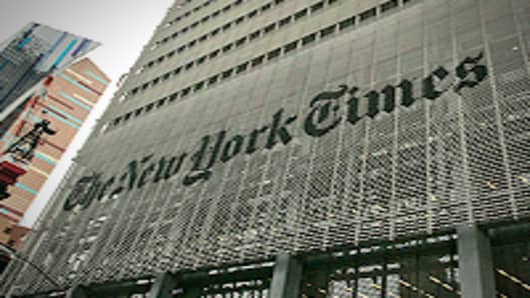The rest of the publishing industry is watching carefully: the Times is a unique case study of a non-financial publication to start charging.
And the Times is just the fifth newspaper among the top 50 by circulation to charge for some online access.
To date, the most notable examples of successful subscription services are the Wall Street Journal and the Financial Times. The Washington Post, Gannett , and McClatchy are trying to figure out whether they can charge, and what model to use. One challenge — few non-business oriented publications have the unique, high quality content to justify charging.
Even if the vast majority of readers work around the NYTimes pay wall, the system could still end up being a win for the publisher. JP Morgan Analyst Alexia Quadrani is making some conservative projections — let's say the NYT converts just 1.7 percent of readers to subscribers, that's half the percentage of subscribers as the Wall Street drew when it launched its pay wall. That would generate $96 million in incremental revenue. Even if the pay wall results in 25 percent lower advertising revenue, the company would still end up making money.
The New York Times still faces a number of risks. For example — print subscribers who pay more for a 7-day-a-week paper subscription than any of the digital options could downgrade to receive the paper just on their Tablets. That would result in the publisher losing its most valuable subscribers.
One thing's for sure — the story of the New York Times' pay wall will be a long one. CEO Janet Robinson stressed to me in an interview when announcing the pay system that the company will remain flexible about where it places the pay gate. Like the investor community, the company is watching to see how the subscription system is received.
Questions? Comments? MediaMoney@cnbc.com



